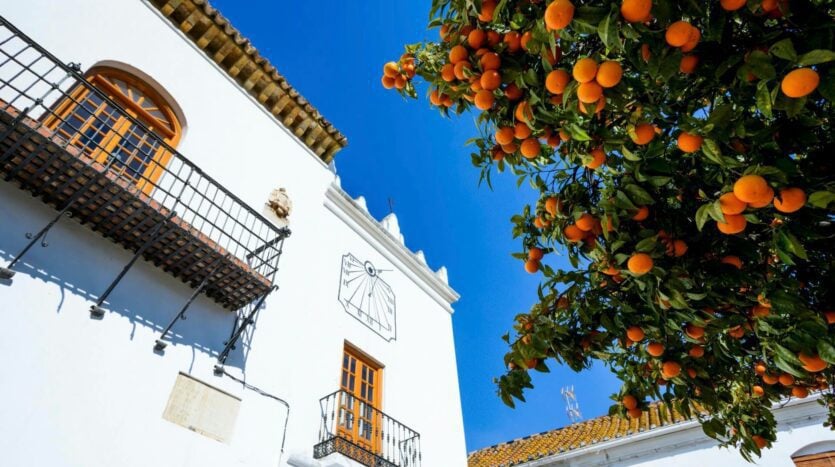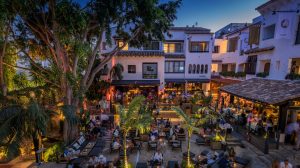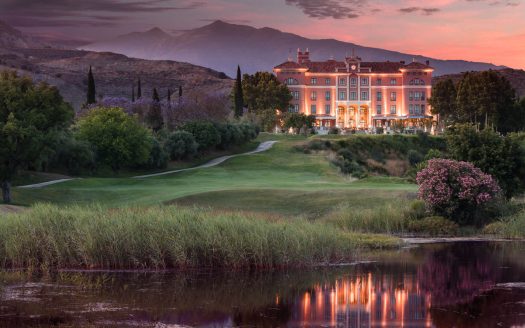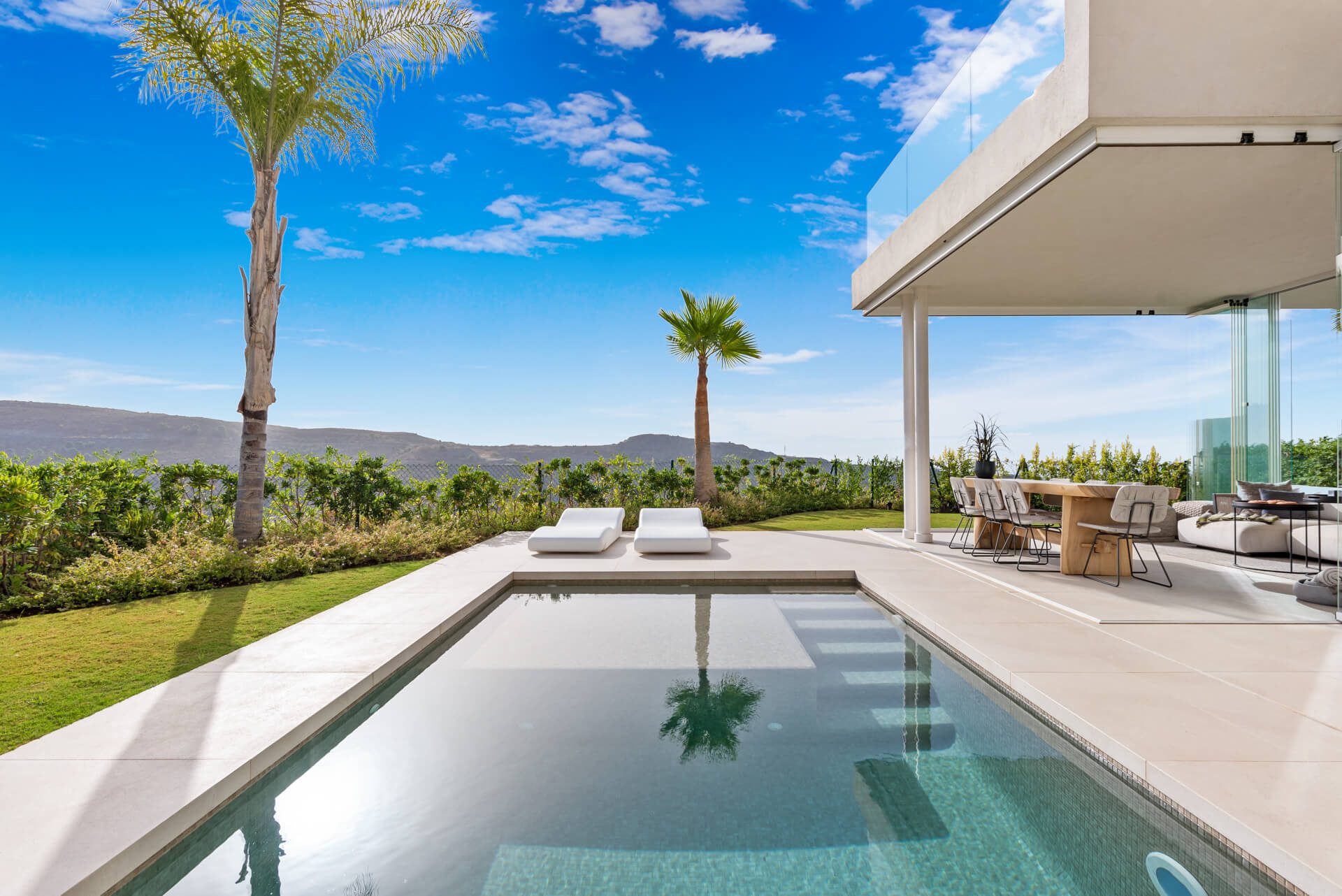Marbella: the old town and its history
Marbella is not just sun, sea and beach. It has a beautiful promenade that stretches from historic Marbella to the luxurious port, Puerto Banús. On the promenade you will find a legion of restaurants, stores and bars. But have you been to the picturesque old town?
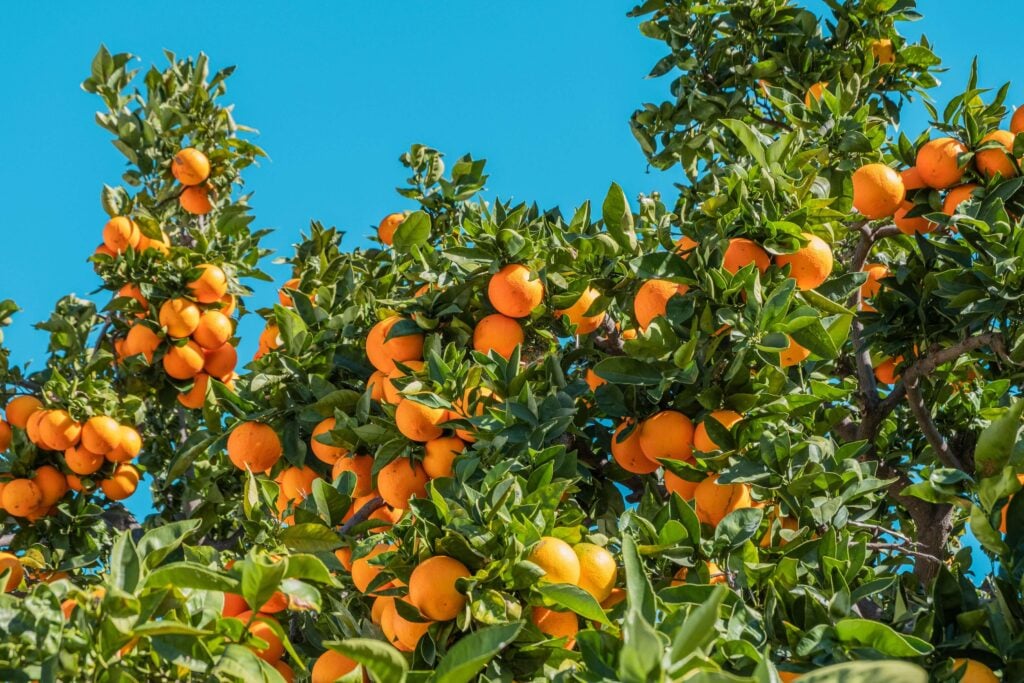
Content
- Plaza de los Naranjos
- Historic buildings
- Narrow shopping streets
- Where to eat good food?
- And for a nightcap…
1. Plaza de los Naranjos
In the heart of the city you will find a beautiful square full of orange trees: Plaza de los Naranjos, translated into English: the orange trees square! But in popular speech it is called the orange square. The square was built after the Christian reconquest in 1485. For the construction it was necessary to demolish a number of old buildings of Islamic origin. This was in fact important to give this part of the city some air and thus create a center for administrative, economic and social power. The walk to the square is an experience in itself. You have to go through a maze of narrow streets and winding alleys full of stores, old buildings and terraces. In the orange tree square is a friendly atmosphere and sometimes they even play live music. The intense green of the orange trees is accentuated by the white Andalusian buildings that surround the square.
2. Historic buildings
In the buildings that surround the plaza de los Narjanos, you can read much of the city’s history. Like the Renaissance-style town hall, Casa Consistorial, which was built in 1568. On the exterior of the building you can see a sundial and a coat of arms, as well as plaques in Old Spanish commemorating the conquest of the city in 1485 by King Ferdinand and his wife Isabella. This couple was also known as the Catholic Kings.
Next to City Hall lies the Casa del Corregidor (representative of the crown). This stately home from 1552, is notable for its decorated stone facade with a triangular viewpoint, combining Gothic and Renaissance elements. The ceiling is designed in Mudejar style and also contains frescoes that remain intact.
The Hermitage of Santiago is the oldest religious monument in the city. It appears to date from the 15th century, just after the conquest of the city by the Catholic monarchs in 1485. Previously, the vault was an Arab mosque. Just steps away from the orange plaza is this beautiful chapel. The architecture is simple and decorated with only one (rectangular) nave. The chapel is the headquarters of the Cofradia del Santisimo Cristo del Amor, an important religious fraternity. The main statue in the chapel is that of San Juan Bautista, made by the circle of Mariano Benlliure, and was later taken over by the Archicofradia de la Expiracion of Malaga.
3. Narrow shopping streets
Around the plaza de los Naranjos are the typical Spanish streets where you can stroll along the galleries, the many chic stores and boutiques, craft shops but also terraces and restaurants. So whether you are looking for a pair of handmade espadrilles (Spanish sandals) or a vintage handbag, you will certainly find what you are looking for here!
Don’t feel like shopping? The narrow streets are an attraction in themselves. The colored flowers in cheerful pots hanging on the walls, the freshly laundered linen hanging to dry or an elderly couple having a cozy chat on the facade in front of their house.
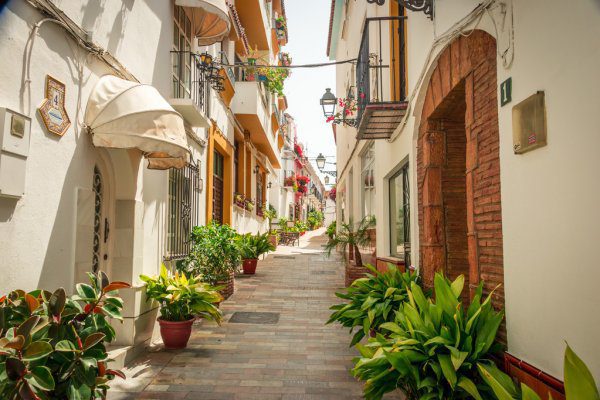
4. Where to eat good food?
After admiring all the beauty and buying the necessary purchases for at home, it’s time to take a break at one of the many restaurants that “old town” Marbella has. One of our personal favorites is Garnacha Restaurante Tapería Gastronómica. This artistic restaurant not only has various art hanging on the wall, but the layout of the plates are true paintings. In addition to the à la carte menu, they also serve a degustation menu with custom wines. Very worthwhile!
At the orange square you will find restaurant Casa del Corregidor. This restaurant has belonged to the Rivera Liébana family for almost 100 years. Some family members were even born in this characteristic building at number 6 of the Plaza de Los Naranjos. Here you can eat delicious authentic Spanish dishes. How about a delicious sopa de ajos (traditional garlic soup with sherry) as a starter and then a delicious homemade paella with meat and fish?
5. And as a nightcap…
One more drink then before bed. A cozy bar is Patio Bar. The bar is hidden in one of the narrow streets behind the orange plaza. It has a small patio where you can enjoy an exotic cocktail or a delicious glass of tinto de verano (Spanish summer wine). You will not only find tourists here but also many locals. In short, a real winner! Still can’t get enough of it? Then drop in at David’s Place. Exuberant decoration on the walls, music of all times and festive drinks make this a unique experience! And be sure to order the best Mojito in Marbella. This bar is open until the early hours.



